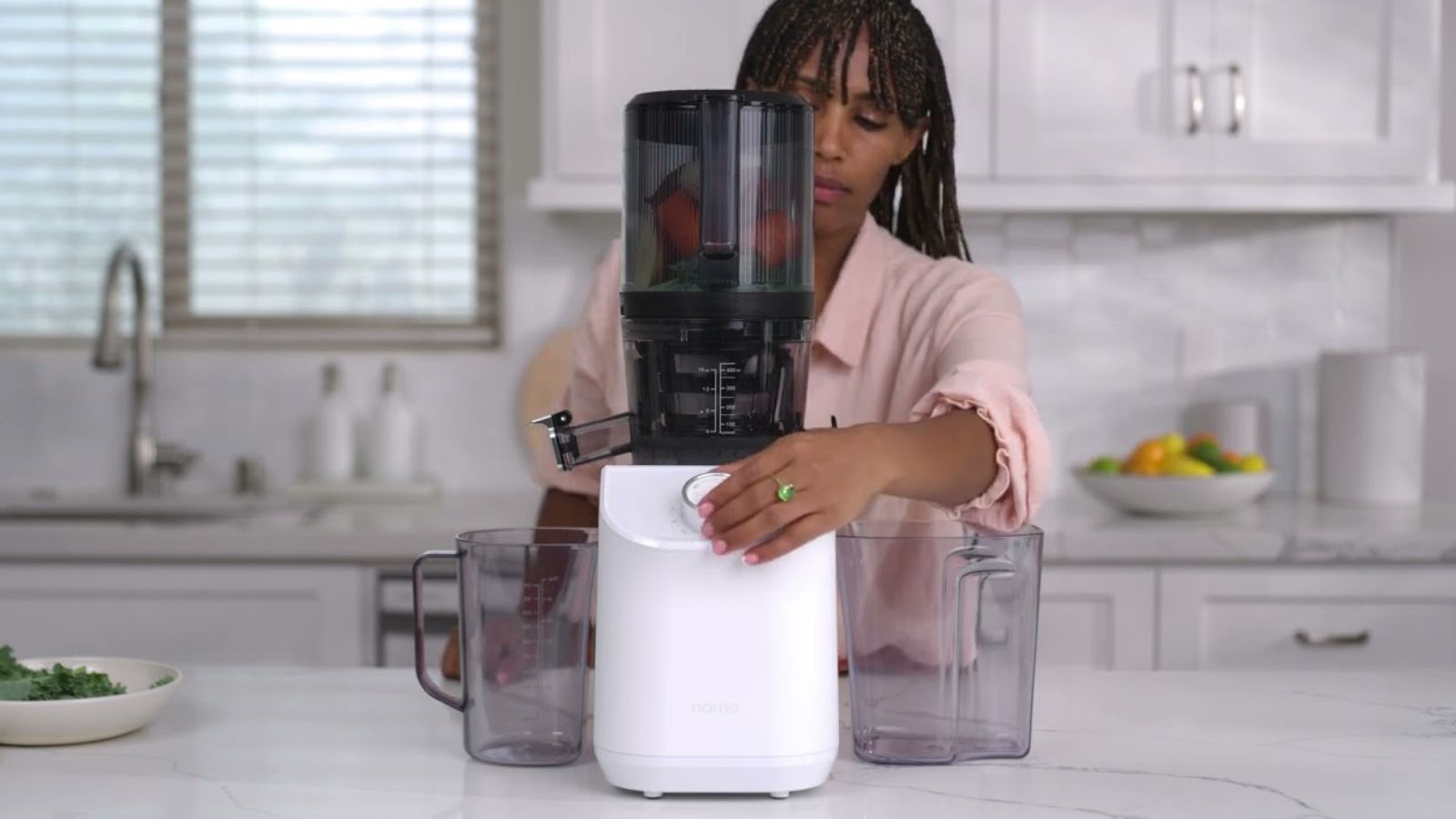
When you choose to buy an appliance that does two jobs at once, you run the risk of having to compromise on one – or both – functions. When it comes to blending and juicing, there isn't really a place that you'll want to compromise. Smoothies, soups, ginger shots, and green juices can't really be anything less than perfect.
In the pursuit of perfection, we've been testing blender-juicer combos, looking for models that could claim a place in our buying guides for the best juicers as well as the best blenders. The Nama C2 is truly the crème de la blend.
If you recognize the Nama name, it's because they're already well-established as some of the best, most luxurious cold press juicers on the market. Their foray into blender-juicer combos is a wise one. We've put the Nama through all of our juicing and blending tests. Here’s what we found.
Specifications
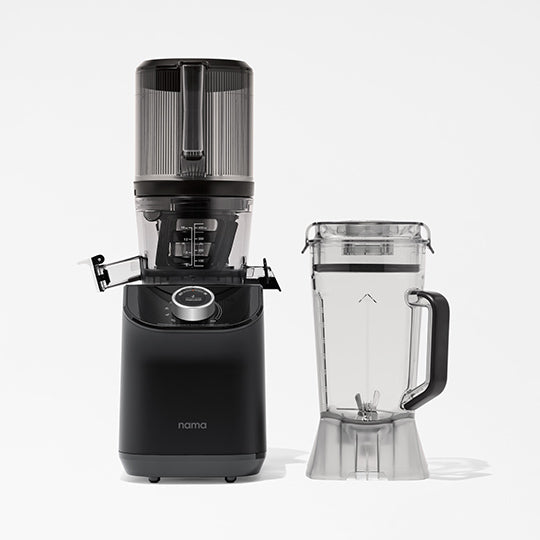
Unboxing
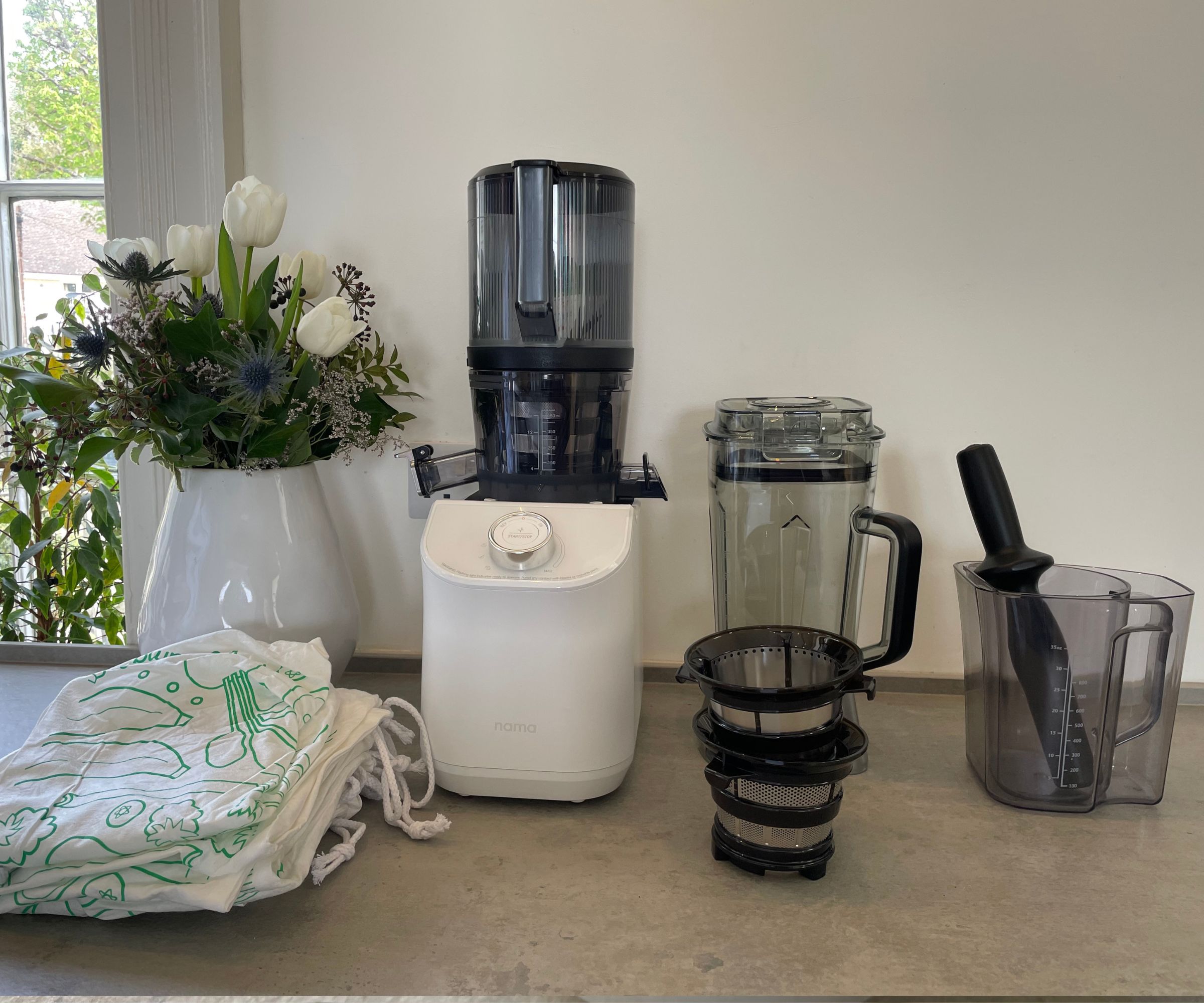
Nama does a lot of things well, including their packaging. Their beautifully illustrated boxes are completely recyclable, but honestly, I don’t think you’ll want to see yours go. Then, each part of the C2 comes with its own material bag to protect it from dirt, dust, and damage.
If unboxing it was a delight, setting it up was even easier. Nama provides a wonderfully illustrated user guide and recipe book that makes everything about the set-up easy.
Essentially, the C2 comes in three parts. You get a big, powerful base station; a blending jug; and a juicer attachment (that is identical to the Nama J2). All of these parts are big, so you'll need some storage space, but they're also really nicely made and they feel robust too. As an appliance built for two, I have no doubt this has all the power you need (and more). However, if you’re investing in a combination machine to save space, this might not be for you.
Who would it suit?
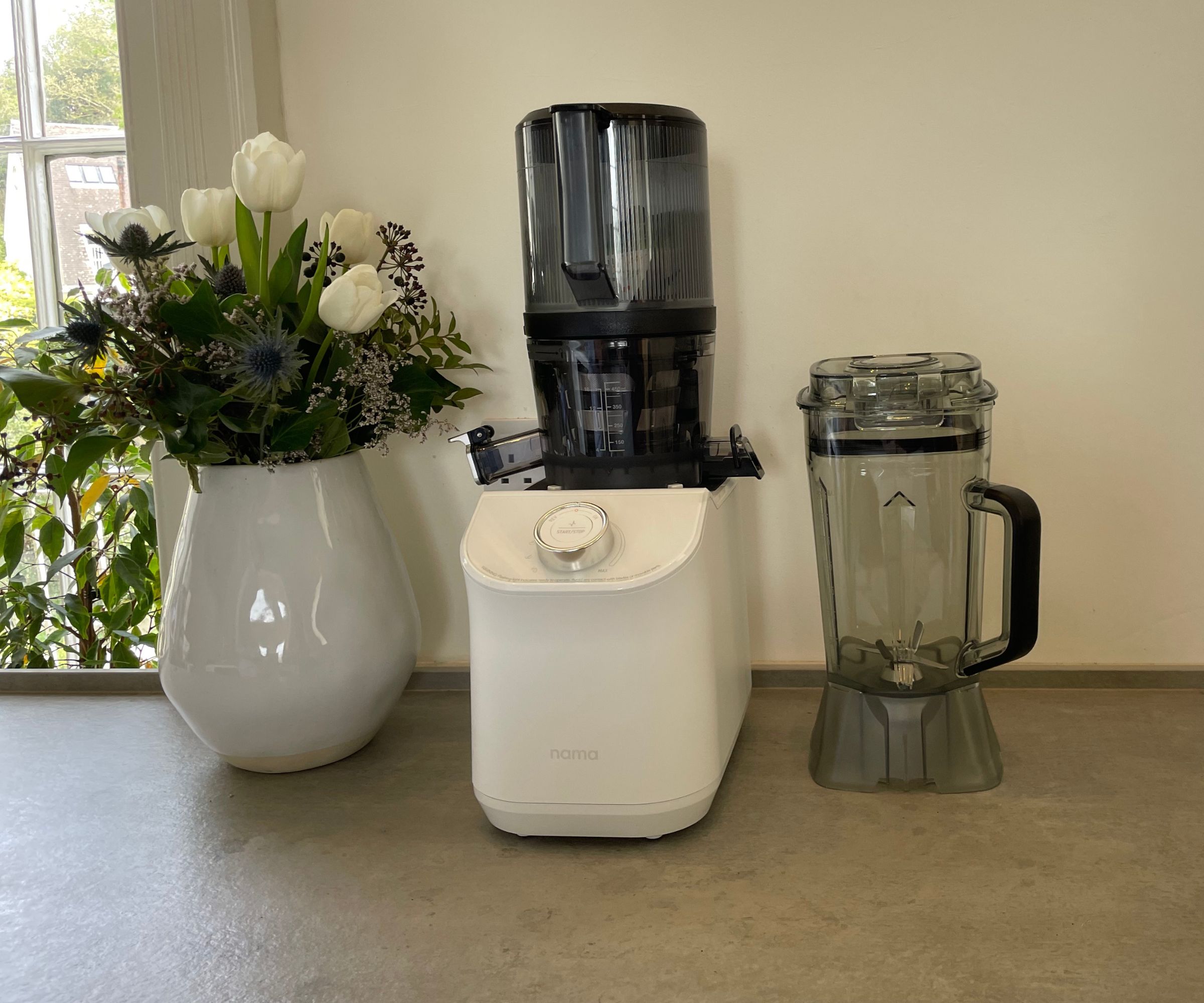
Nama always serves up luxury appliances, so if you know you like your juicers to feel as smart and sleek as they look, you’re in the perfect place. Premium appliances can often skimp on capacity in the hopes of designing something super slick, but Nama steered well clear, opting for the kind of appliance that will meet the needs of any big and bustling family. It’s an investment, but it’s a durable one at that.
The simple controls and dial are easy enough for anyone to use. If you’re baking with the kids, they’ll be able to have a hand in your creations. And similarly, if you’re new to juicing and blending, you won’t struggle with this at all.
Whilst the black and white colorways and sleek aesthetic make this easy on the eye, it’s worth noting that the big station isn’t quite so countertop-friendly. You’ll need deep, low cupboards (the base is too heavy to lift into a wall cupboard) with plenty of space for all the jugs, juicers, and accessories that come with the Nama. So, if you’re short on space in the kitchen, you might want to re-think and invest in a slightly smaller model.
What is it like to use?
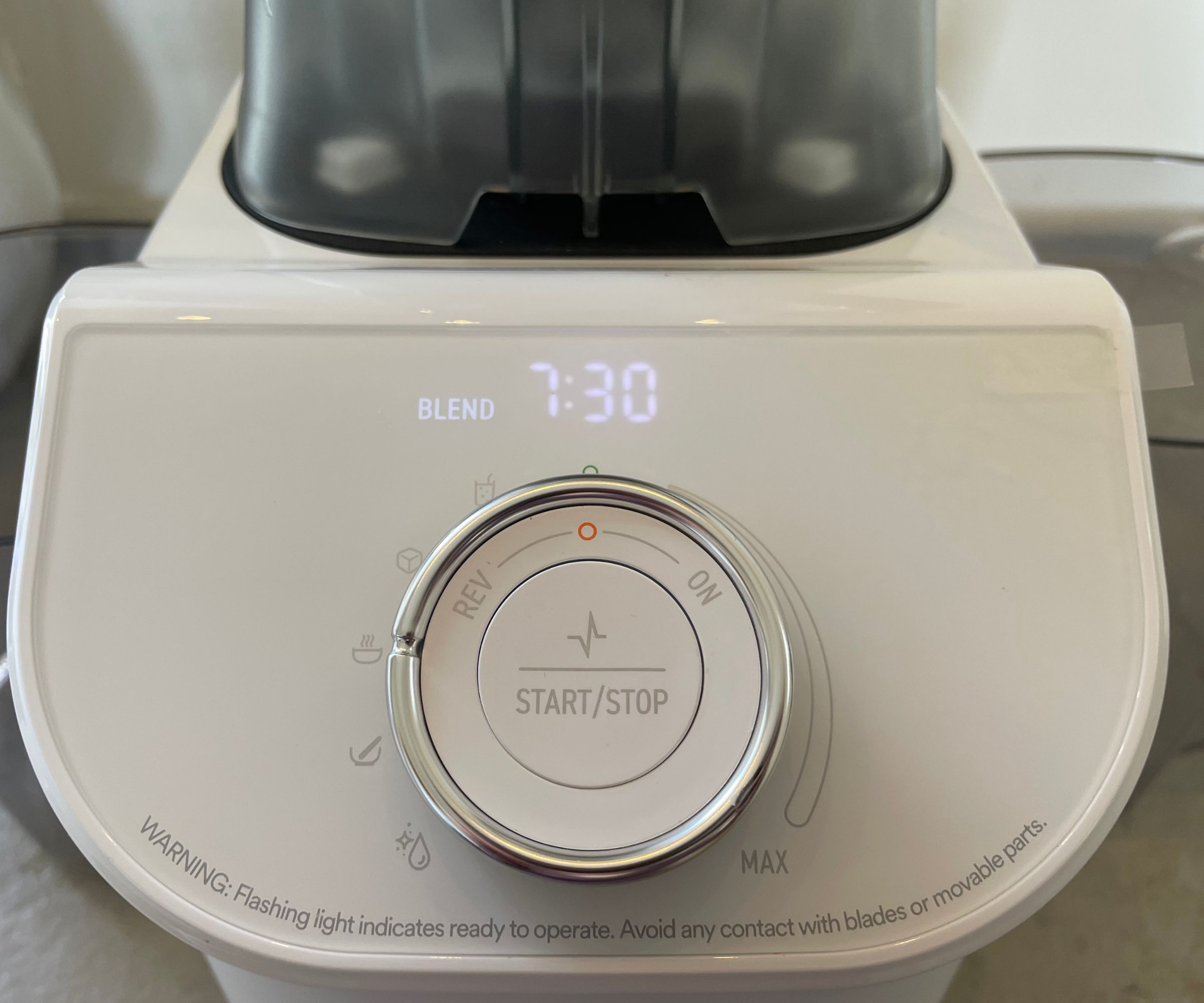
The sheer simplicity of the Nama is why it has such a broad appeal. Nama’s illustrated guide will show you which pieces slot into which places. Once you’ve assembled it once, you won’t need the guide again, it’s incredibly straightforward.
The dial has some useful icons to point you towards whichever function you want. There’s a hot soup setting, crushed ice, grain milling, smoothie, and cleaning functions. Then for juicing, it’s simple. You just twist the dial to juice.
There's also a useful timer that will let you know how long your Nama has been running for. Until you use a product that has this feature on, you won't fully appreciate how easy it is to use. The timer is a good reality check. If a recipe says to blend for a minute, that can be hard to judge unless you actually set a timer (which people very rarely actually do).
Test 2: the juicer
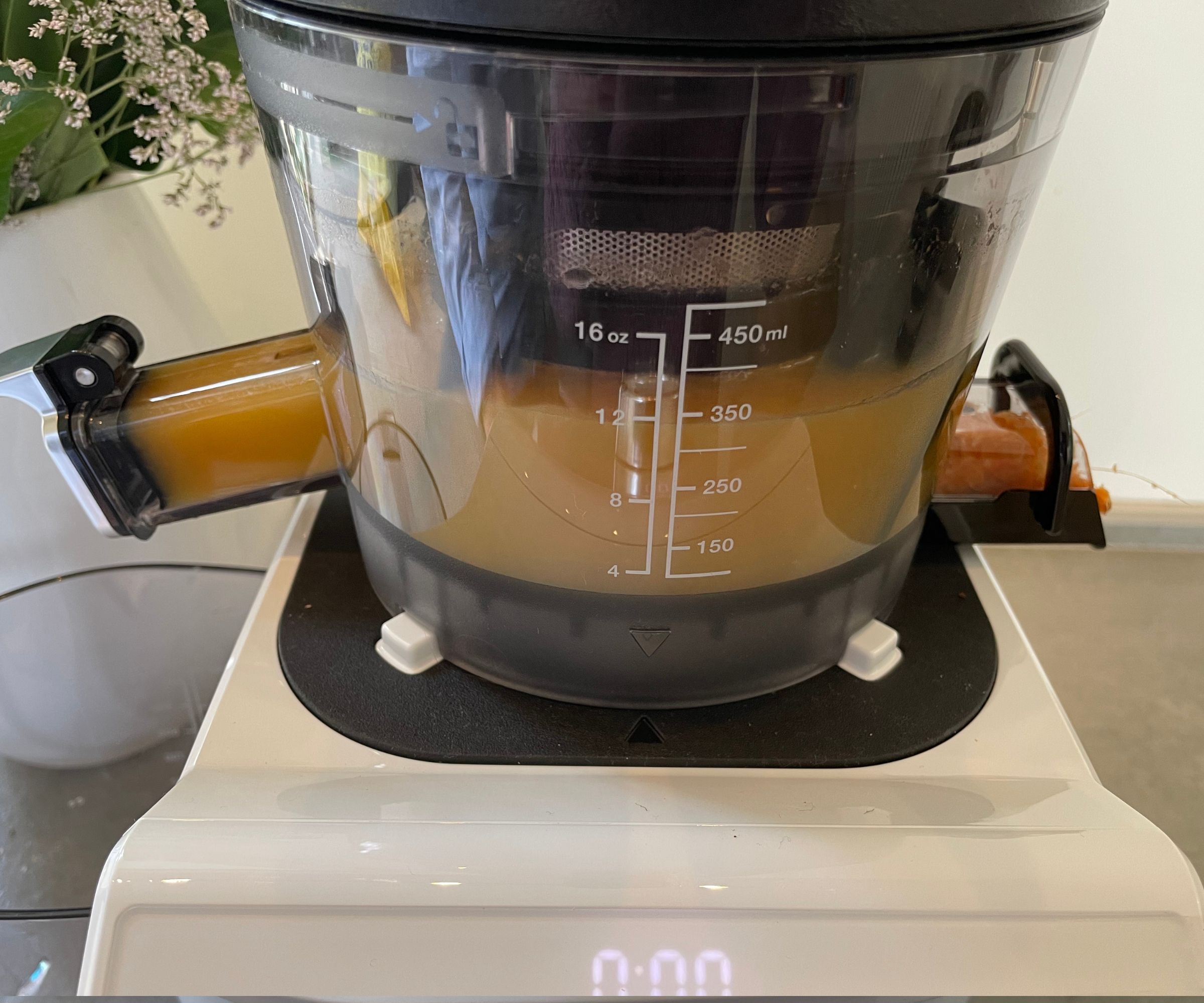
So, after rinsing all the parts and slotting them in their places, we were ready to get testing. We started with juicing because our experts could almost bet what we were going to get here. Our standard tests for every juicer are: carrot and orange juice, ginger shots, green juice, and almond milk. This means that we cover how well the juicer can handle fibrous ingredients (ginger), soft fruits (orange), hard vegetables (carrots), leafy greens (spinach), and hard nuts (almonds). We threw everything at the Nama, not giving it much let-up between batches and our experts were suitably impressed.
All of our juices were crisp and clear, none had smoothie-like pulp or lumps. We agreed that this made some perfect cold-pressed juice. Then, when we ran a check at the pulp end of the juicer, it was dry and crumbly, indicating that we had well-extracted all the juice and nutrients from our ingredients across the board.
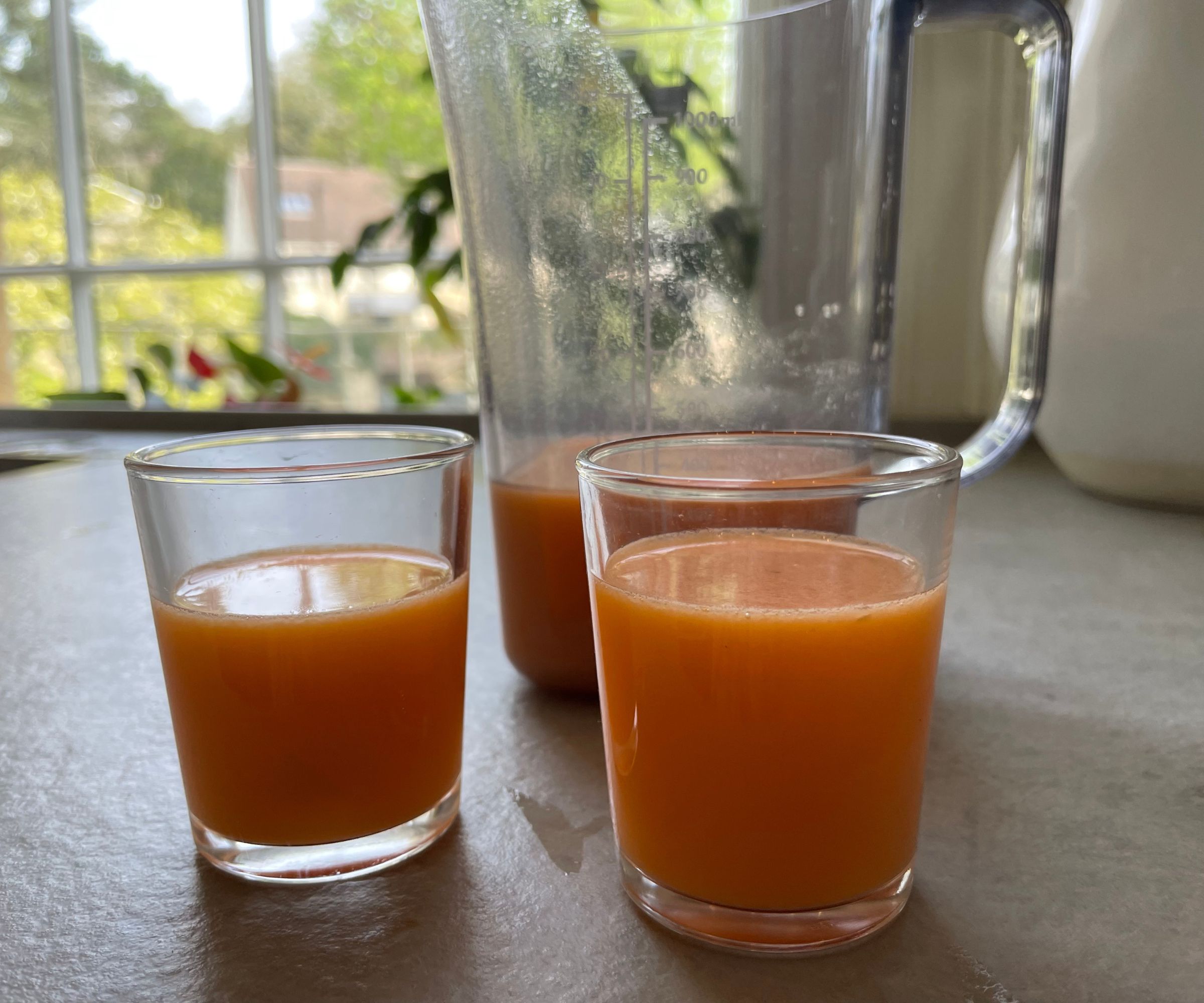
Almond milk and other plant-based milks are often featured in most modern juicers, but they’re rarely done well. As a seasoned almond milk drinker, I was hopeful that the Nama would do a good job. Nama advises that you pre-soak your almonds, which I did for our first test with excellent results. The almond milk this made was pure white and smooth to drink. It’ll separate after a few hours, but that’s nothing a shake won’t fix.
I was intrigued to see how this would cope with less-organised nut milk makers, so I tried adding unsoaked almonds to the mix. Actually, the Nama still did a great job of pressing them into a delicious nut milk. It had a bit more texture, but nothing that I would complain about.
Test 2: the blender
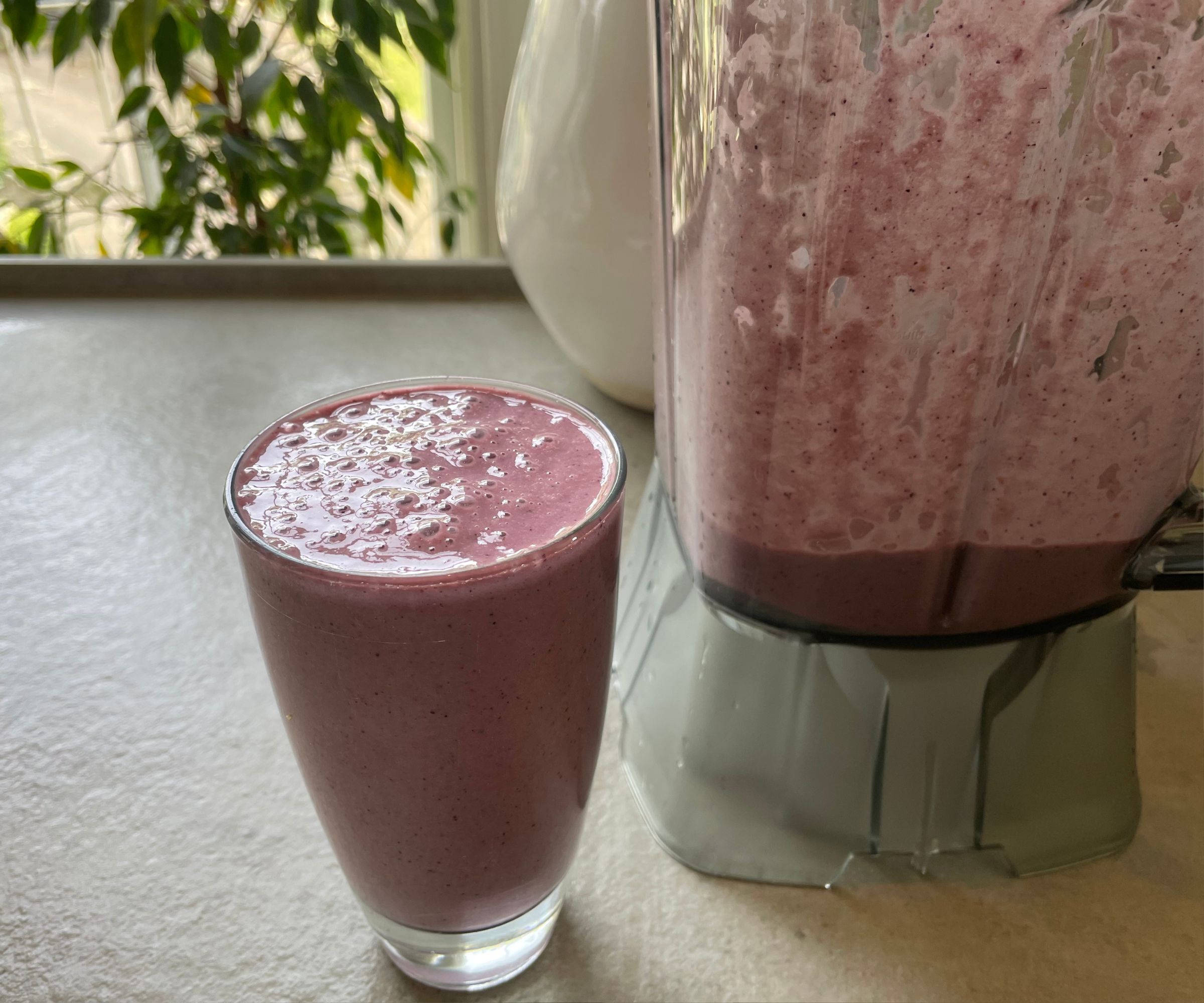
Now for the all-important test: can Nama make blenders as good as their juicers? If you’re on the edge of your seat, you can relax. Nama makes blenders that are worthy of a spot in our buying guide for the best blenders. I used this to make smoothies, protein shakes, hummus, crushed ice, and nut butter. The results were consistently impressive. Something that I’m both pleased and relieved to say.
Our first blending test isn’t easy. We add seedy, frozen strawberries, frozen bananas, spinach, and almond milk into the pitcher. At first, I added enough for just one smoothie, because I wanted to see how the huge 100 oz pitcher would handle small ingredients. I twisted the dial to blend, and, in less than sixty seconds, I had a wonderfully smooth drink. There weren’t any seeds or skins that hadn’t been shredded into a liquid. Whilst this is impressive, it’s worth noting that the C2 made a considerable amount of noise in the process. It’s fine, because the Nama works quickly, but you won’t be making any friends if you blend first thing.
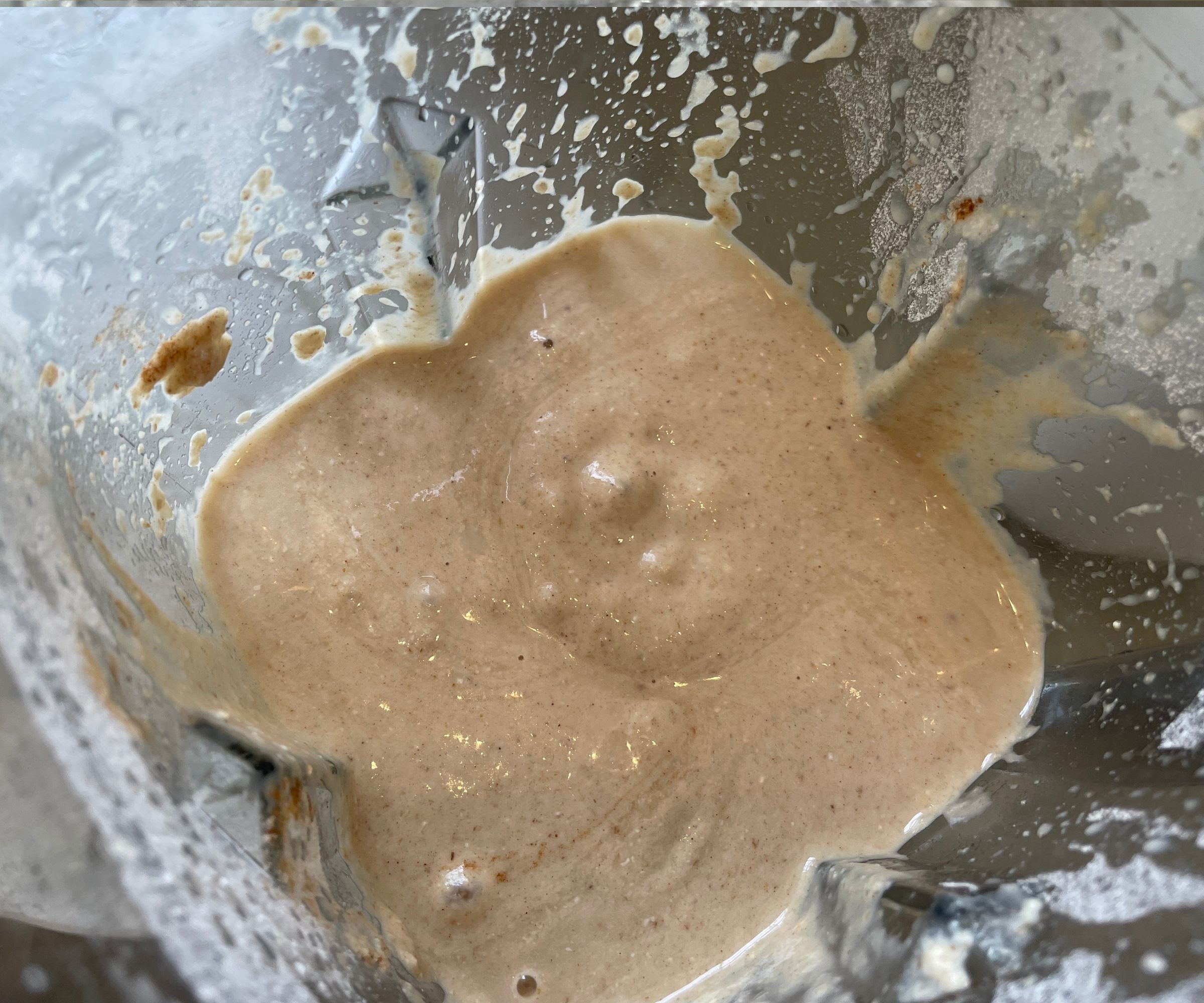
For our protein shake test, I made a big batch of smoothie mix. I wanted to see a) how well the blender could make large quantities and b) whether it could incorporate powders into liquids without them going lumpy. In other words, can they make batters and protein shakes?
First things first, the smoothie was great. It didn’t take much longer to achieve the same, silky-smooth results. Next, when I added in the protein powder and gave it a whizz around, the smoothie was still wonderfully pourable.
After that, I wanted to see how this would handle a task with a little less liquid, so I made hummus in the Nama. This was a simple concoction of chickpeas, cumin, salt, lemon, and tahini. I used the milling setting for the blender because I didn’t want it to be too aggressive with the hummus. Whilst this was speedy and made a serviceable hummus, I think the combination of less liquid and a huge blender left this on the chunkier side. Adding more ingredients would have given me a better result, but my single can of chickpeas was already enough for plenty of hummus.
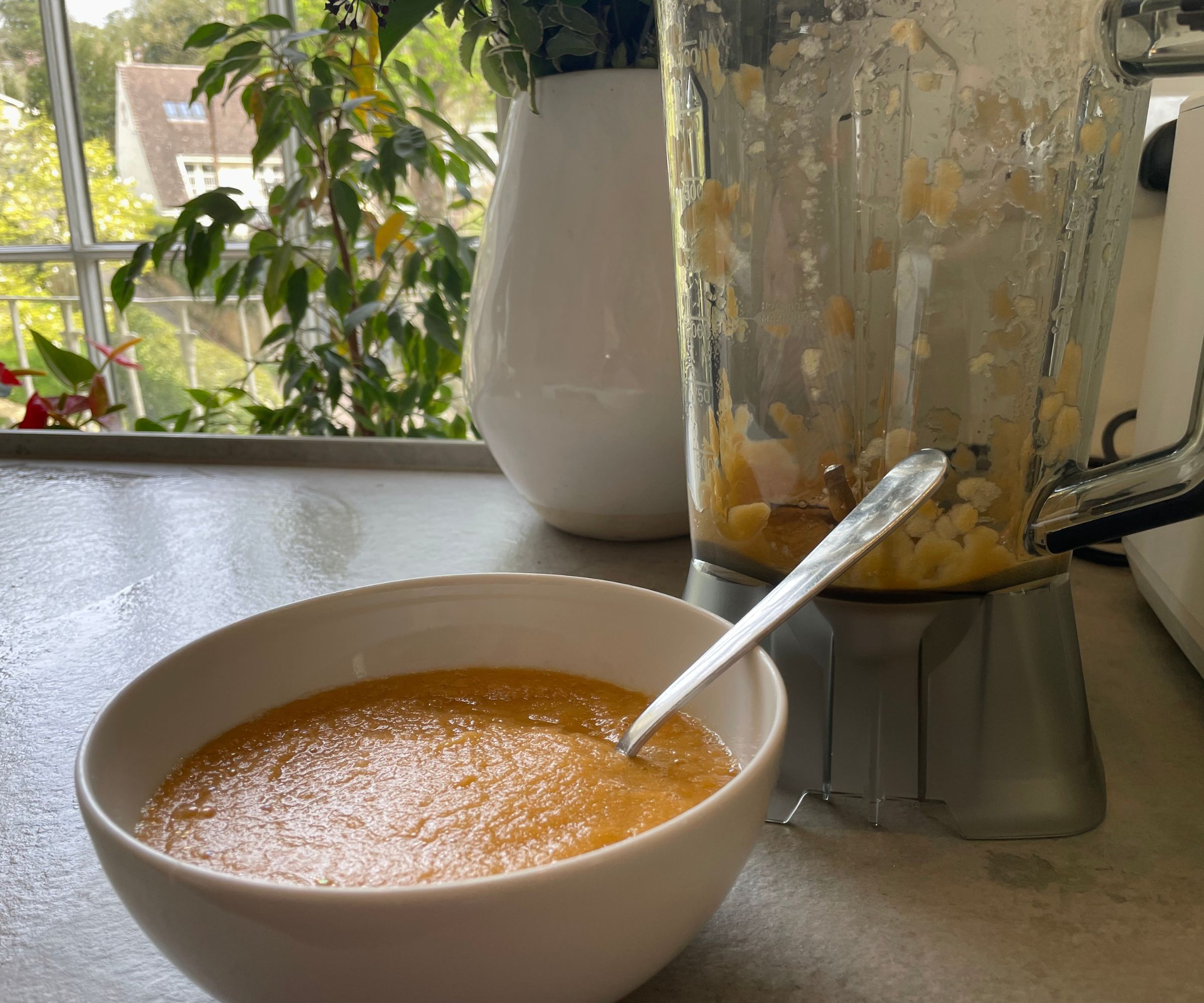
We don’t always test soup-making in blenders, because some can’t handle hot ingredients. However, the Nama claimed to be able to both heat and blend. Intrigued, I added chopped carrots, cilantro, onion, and vegetable stock to my pitcher. The soup setting runs for a while (I timed nearly ten minutes), but it does a decent job of making a smooth soup. I could have kept on blending for smoother results, but it’s noisy and I’m not sure anyone would want it running for too much longer.
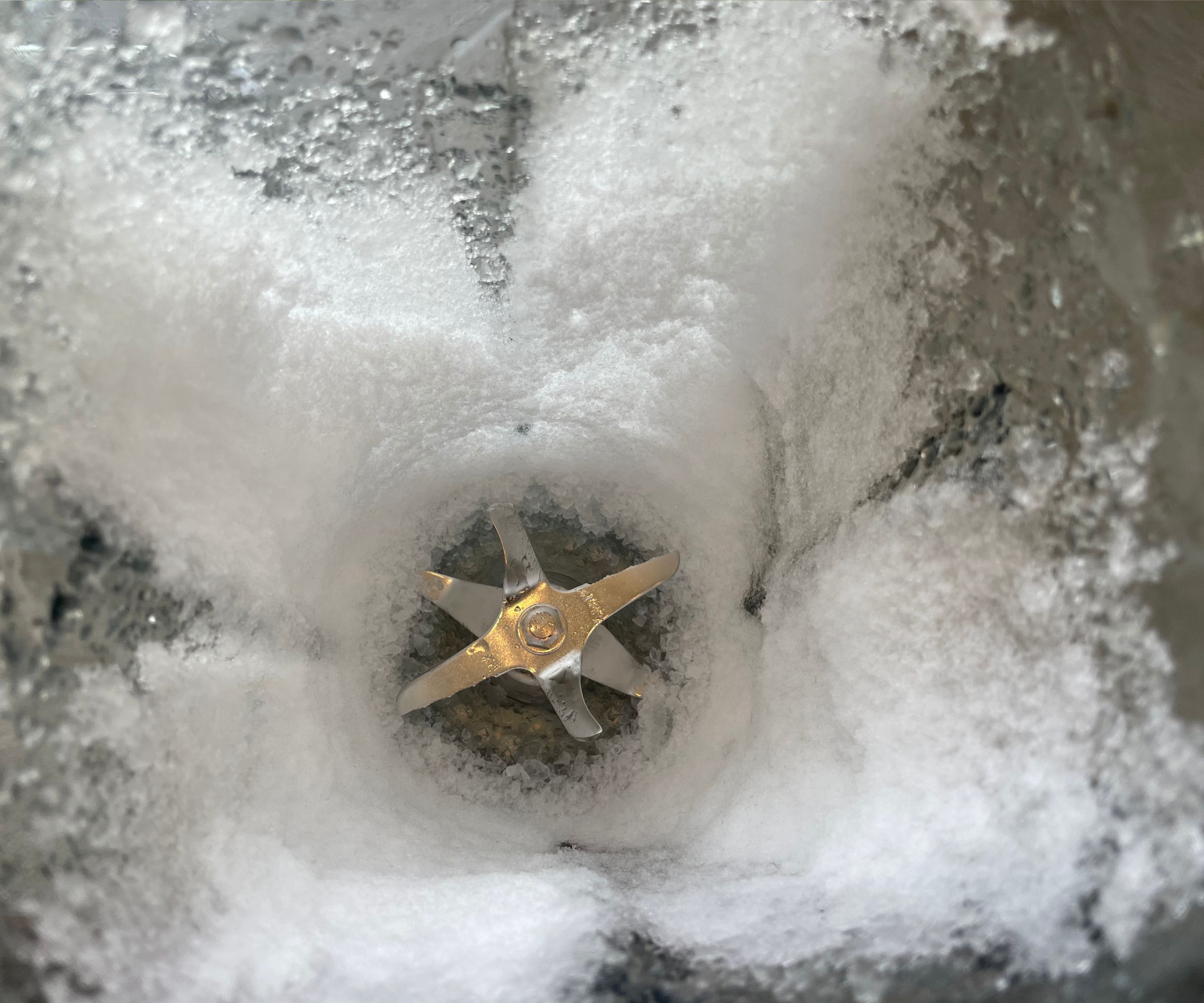
The last test we give our blenders is on crushing ice. We rarely have impressive results in this category, but the Nama has an ice pre-set and well-shaped pitcher for the task. After adding two handfuls of ice and a small amount of ice water, I switched to the ice pre-set and in a matter of seconds, the ice cubes misted into nothing. It’s the best performance I’ve been on our ice test.
Cleaning, storage, and maintenance
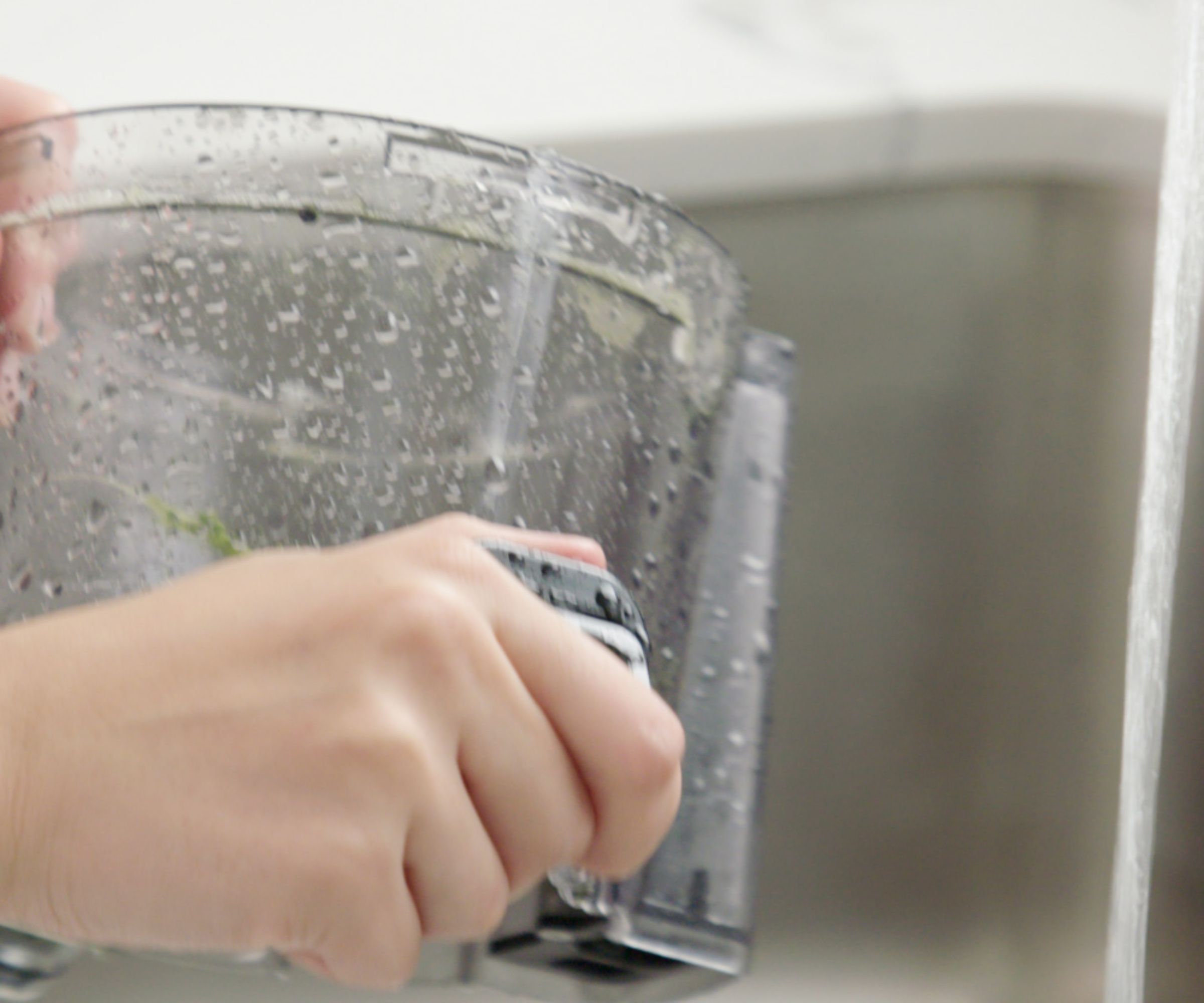
Some parts of the Nama are easier to clean than others. The juicer comes apart, but each piece has to be hand-cleaned, which is fiddly. Luckily, Nama provides accessories to help you, but that might put you off juicing if you know you have a jam-packed morning that you can't clear five minutes out of for cleaning.
The blender part is easier to clean. You can either run it blending with a touch of dish soap or pop it in the dishwasher. The blending pre-sets actually feature a special cleaning function, so I'd recommend following this since it's what Nama recommends.
Once you've cleaned yours, you'll need a place to store it. There's no escaping it, this is big. The base is tall, wide, and heavy, so you'll be better off keeping it in low cupboards or just leaving it on the countertop. It might be tricky to make space for, but if you think that this is covering the functions of a blender and a juicer, you will actually be saving a little bit of space.
How does it rate online?
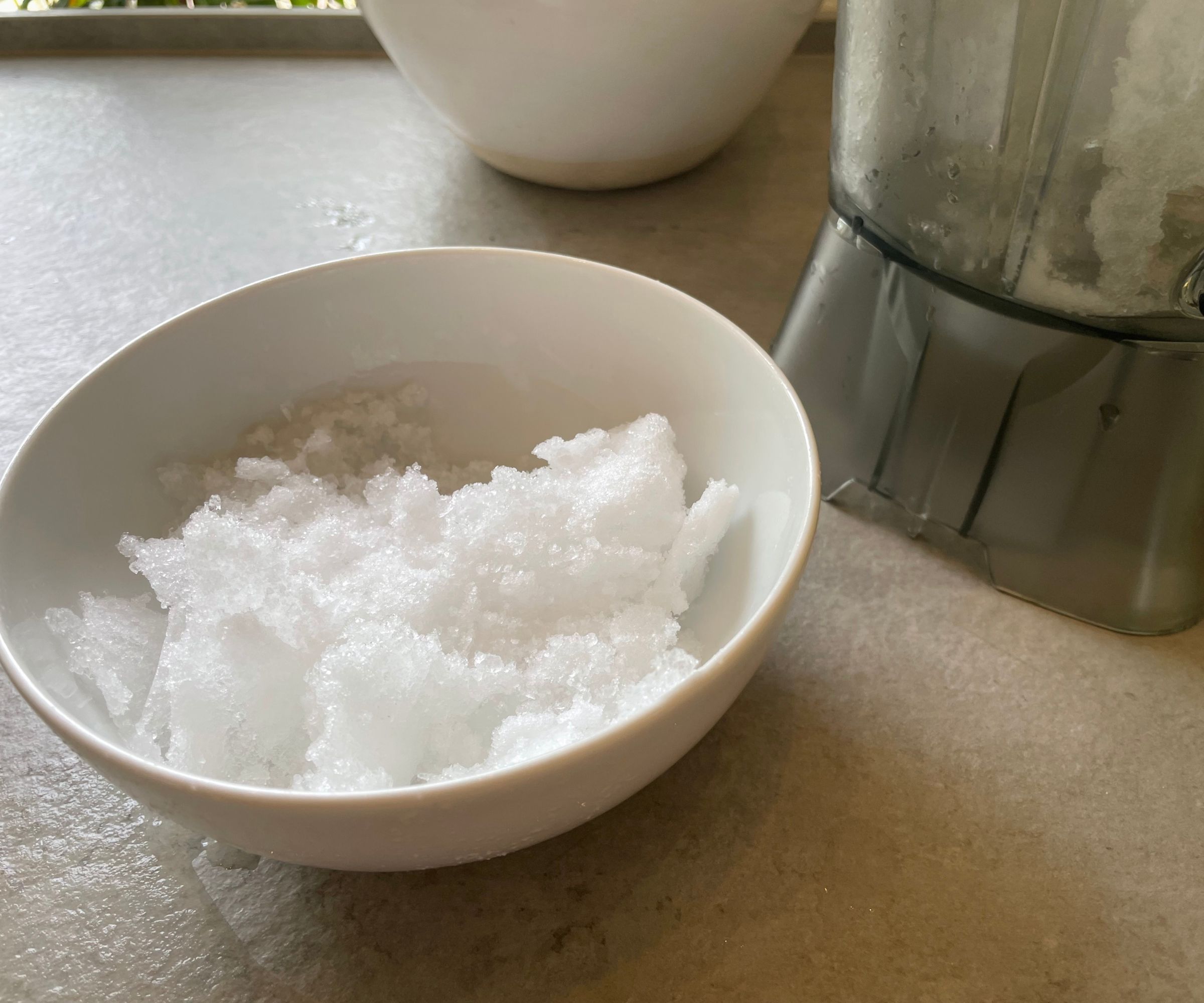
The Nama C2 is one of the brand's lesser-known appliances, but it has a seriously impressive reputation online. Out of 160 reviews on the Nama website, the average rating score is 4.7 stars.
Everyone raves about the juicing and blending functions of the Nama. They say its power is impressive, delivering professional results across all fruits, vegetables, and nuts. People also praised the durable build-quality and overall style of the C2, saying that Nama has delivered on consistency with their latest launch.
When I looked for criticisms, they all centered around two issues. The first is that this is fiddly to clean. Most of these were related to the juicer, which is, inescapably fiddly. This isn't a problem unique to Nama; all juicers are a pain to clean, but this is particularly fiddly.
The second issue is price. The C2 is $800, so if you thought that you'd be saving money by buying a 2-in-1 appliance, you won't be. Whilst this does deliver on style and premium build quality, a number of customers felt that a blender-juicer combo shouldn't cost nearly $1,000. If I'm playing devil's advocate, this has a 15 year warranty that does help to reassure people that this is a long-term investment. However, for some, it's still too much.
How does it compare?
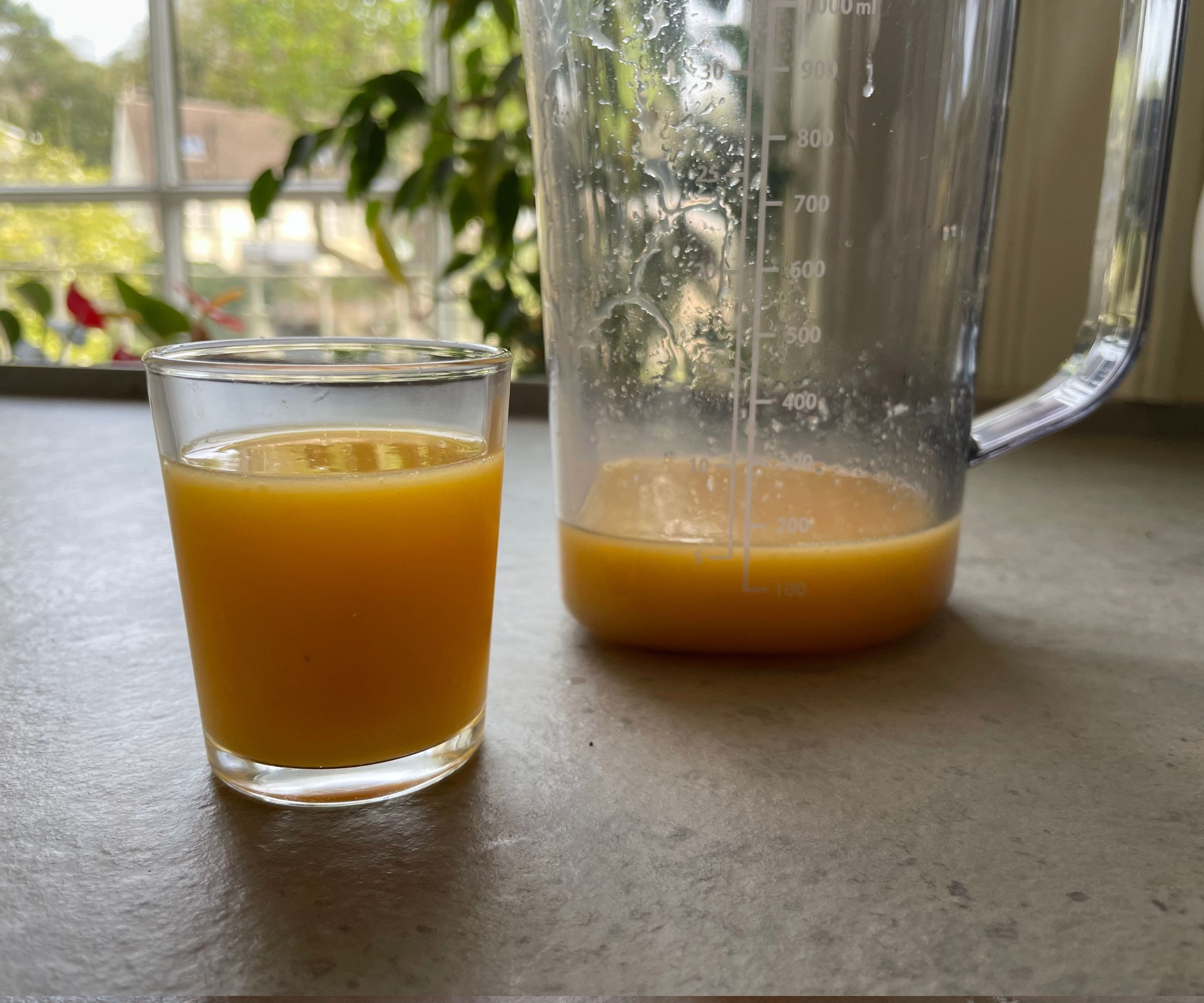
The only other blender-juicer combo worth considering is Breville's The 3x Bluicer. This has a very different aesthetic. The stainless steel, slim body is much more suited to a functional, industrial kitchen.
It’s certainly smaller. The 50 oz capacity is half of the C2's, but then the footprint isn't half of the Nama's. So, if you're wary about the Nama's footprint, it's worth thinking about proportions. If you only need 50 oz (plenty for a smaller family), you might not mind downsizing. If you know you need more capacity, the Nama is actually more space efficient, even if it doesn't look it.
Performance-wise, the Nama is a better juicer. This is because the Nama uses the cold-press method to gently, but firmly extract maximal nutrients and juice from all of the ingredients. The Bluicer uses a quicker and louder method that isn't quite as efficient. You'll get a cloudier juice that doesn't last as long as the Nama's. If you didn't have them side-by-side, the Breville's would be good. However, as someone who uses the Nama, it was clear that this is better.
As a blender, the two are both on a par. The results were similarly good. However, the Nama has a few more premium features: it can heat your food with a soup function; it can time your blending; and you can use manual settings or pre-sets. These are all features that the Breville doesn't have. Most of these are luxuries that you don't necessarily need, but they're nice to have.
So, if you're willing to splurge on a luxury appliance, the Nama is for you. However, if you want to save on space and money (and you don't mind missing some of the premium finishes), you'll be happy with the Breville.
Should you buy it?
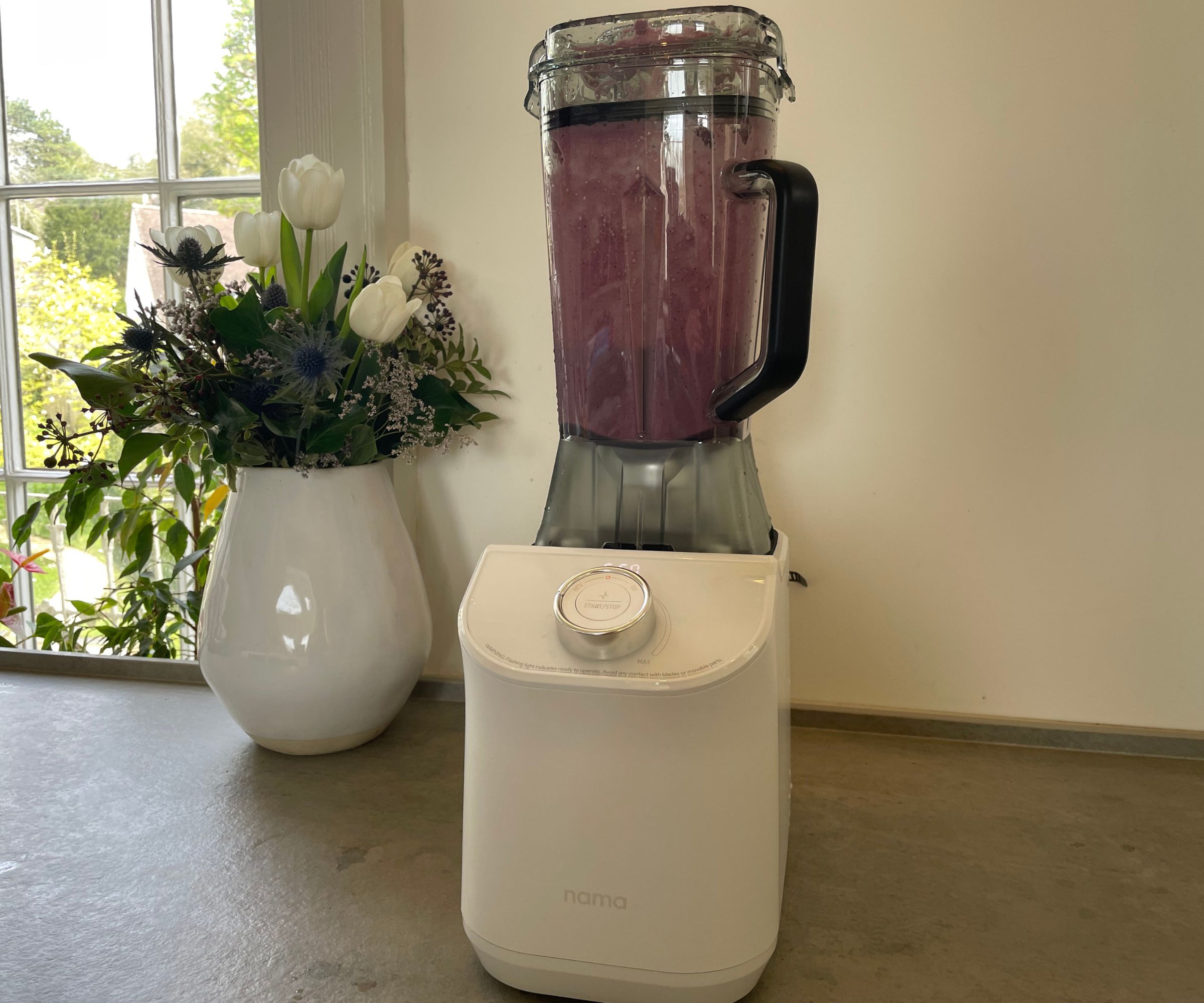
The Nama C2 is a truly luxurious blender-juicer combination machine. If you like to own the best of the best and the price tag (and footprint) don't matter to you, the Nama is a great buy. The fifteen-year warranty is a good reassurance that you're investing in the longer term.
Whilst I was impressed with the appearance and performance of the C2, I can appreciate that $800 is a lot to spend. I might be tempted to wait for a sale to shop the Nama.
How we test
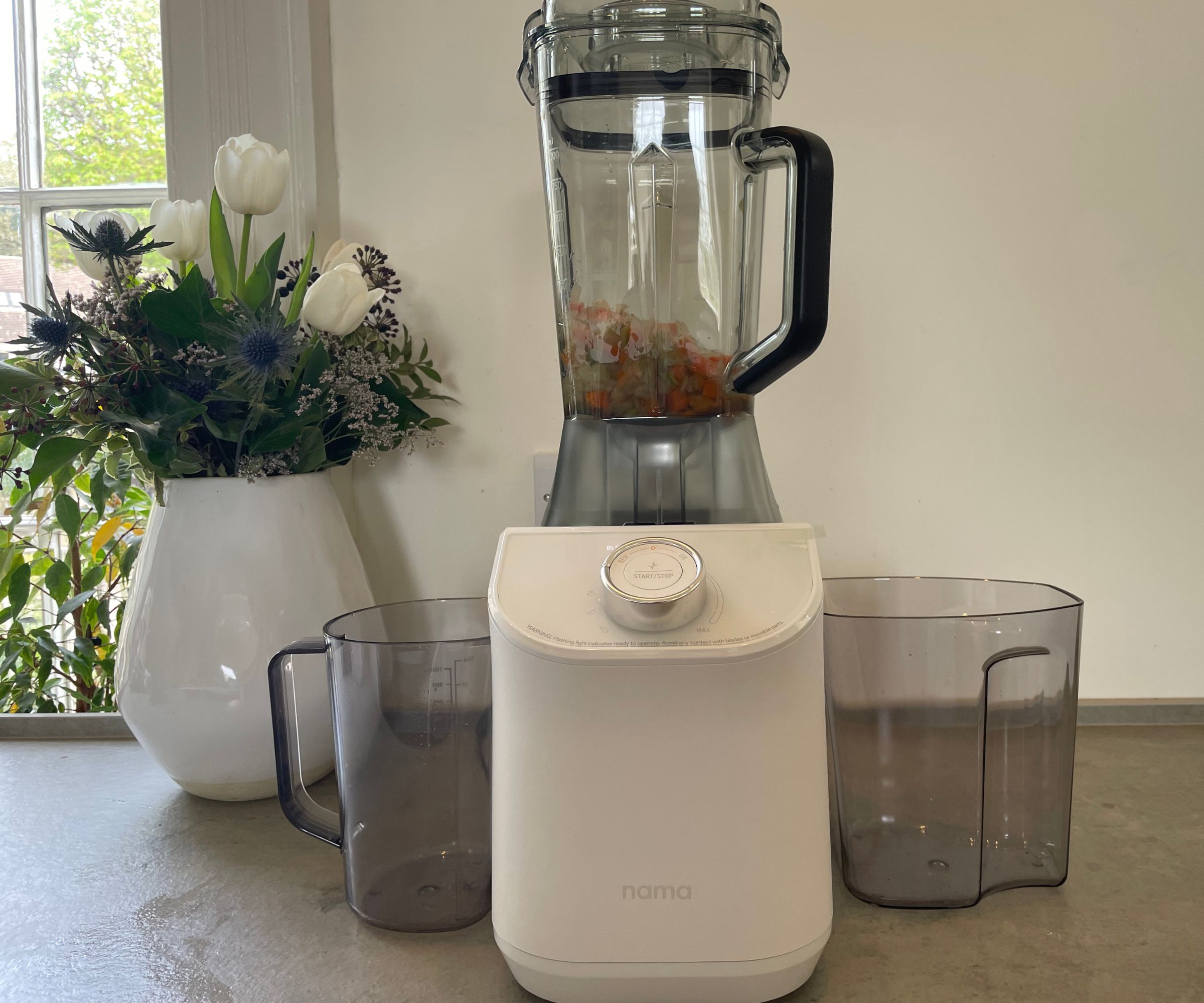
At Homes & Gardens, we take our tests seriously. We had to run both our blender and juicer tests on the Nama C2 to make sure that it was good enough in both categories for you to make the investment.
When we test blenders we have four standard tests that we run. The first test is smoothie making. This is a basic skill that all blenders should whizz through, so we give each model leafy greens, seedy berries, frozen fruits, and nut butter to make sure that it can produce super smooth results. We'll also add in a scoop of protein powder to see whether this can make a good batter (without any lumps in).
The next test we give blenders is making a dip, normally hummus. This can be tricky because it has a lower liquid content, but it's important that your blender can make more than just drinks and batters. That's why we also have an ice cone test. This is where we see whether the blender can crush ice into small flakes for frozen drinks.
Our juicer tests are equally rigorous. We make carrot and orange juice, ginger shots, green juice, and almond milk to see how the juicer can handle a range of soft, hard, and fibrous ingredients. We look for crisp, clear drinks that haven't been made too foamy. Then we'll also check the pulp. If it's dry, that's a great indication that the juicer has extracted a good amount of water from the ingredients.
For each test, we talk about how easy it is to do, whether it makes much noise, how efficient it is, and how impressed we are. Our experts also make comparisons to other models on the market and we read up on user reviews so that you can get a holistic idea of what the model is like to use and where it sits on the market.
If you want to find out more, you can visit our pages for how we test juicers and how we test blenders.







